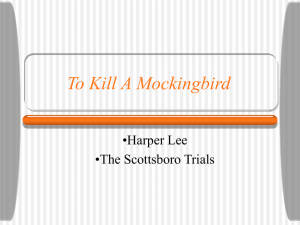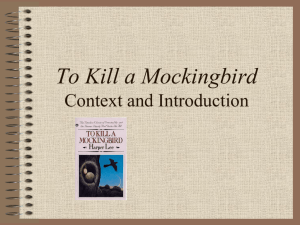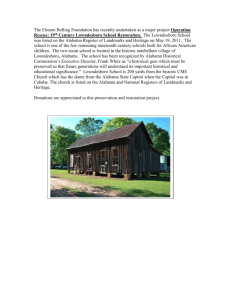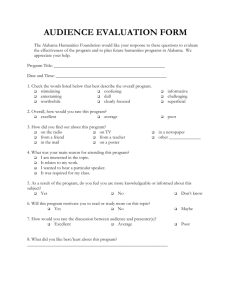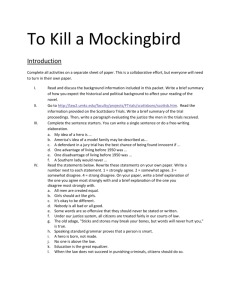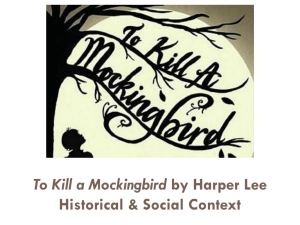2014 TKAM and Harper Lee Intro PowerPoint
advertisement
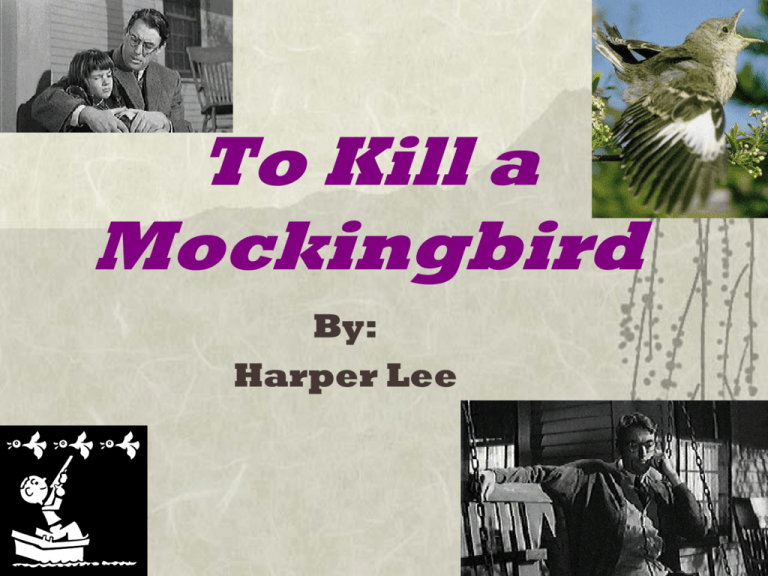
To Kill a Mockingbird By: Harper Lee Nelle Harper Lee Born in April 1926 in Monroeville, Alabama, a rural southern town Grew up in 1930’s Her father, Amasa Lee, was an attorney who served in Alabama state legislature Avid reader as child Was 6 years old when Scottsboro trials were covered in state and local papers. Studied law in college When she created Mockingbird, she was told it was a series of short stories and urged to revise it. She worked on it for an additional two years before it was published. It was published in 1960- a time of chaotic events and racial strife as Civil Rights movement grew violent and spread across the nation. Alabama was in the news because of Montgomery bus boycott, Martin Luther King’s rise, etc. Lee wrote Mockingbird during the beginning of the Civil Rights era (1955-1958). There’s More! Novel shot to top of best seller list. Made remarkable impact on a divided nation. Book was Pulitzer Prize winner in 1961. Based upon many real people and events. What do you already know? Think back to what you have learned about the Civil Rights Movement in your history classes. Make a list of everything you can remember. Share with a partner Compare your list to what I have on the Power Point. Events during Civil Rights Movement 1954: Brown vs. Board of Education Topeka, Kansas: Supreme Court rules that public school segregation is illegal. Blacks to be integrated with whites. 1955: 14 year old boy beaten in Chicago for allegedly whistling at a white woman in a store. Also, Rosa Parks refuses to give up bus seat. 1956: Autherine Lucy is first black person to admitted to University of Alabama. ML King’s home is bombed after successful Montgomery bus boycott. Motions filed in U.S. District Court calling for an end to bus segregation. Violence erupts on campus of U of Alabama forcing Autherine Lucy to flee from the campus. She is then barred from the school. Montgomery bus boycott ends in victory on Dec. 21. African-Americans board the first desegregated bus in Montgomery! 1957: Federal troops sent to Little Rock, Arkansas to protect nine black students at Central High School. White mobs were trying to block the school’s integration . 1960: Greensboro, North Carolina: first lunch counter sit-in by four black college students—inspires more throughout South. TKAM is published. 1961: First black student admitted to U of Miss. Violence breaks out due to the integration. 1963: Over ¼ million people participate in March on Washington and hear ML King deliver “I Have a Dream” speech. Birmingham church is bombed in Sept., killing 4 black girls. 1964: 3 civil rights workers are kidnapped and murdered by white law enforcement officers and members of KKK. (film-Mississippi Burning) 1965: March for Voting Rights is held in Alabama. Voting Rights Act passes and signed into law: ends literacy tests and other obstacles stopping minorities to vote. Did you have any of the events on your list? Setting Story takes place in the small, fictional town of Maycomb, Alabama. The time period was during the Great Depression. Segregation was still enforced. Great Depression began when the stock market crashed in October, 1929 Businesses failed Factories closed – People were out of work – Even people with money – suffered because nothing was being produced for sale. People who lost their homes were forced to “live off the land.” The Great Depression Extra Strain for Southern Farmers Southern farmers were under great economic stress long before the stock market crash of 1929. They were faced with agricultural depression in the early 1920’s. In 1927 they contended with the effects of the Mississippi flood. To make things worse, they were hit by a drought in the early 1930’s Scottsboro Trials Add to Setting and Plot There are many parallels between the trial of Tom Robinson in TKAM and one of the most famous trials in Nation’s history: the Scottsboro Trials. On March 25, 1931, a freight train stopped in Paint Rock Alabama and 9 young black men, ages 13-21, were arrested because two white women, one who were underage, accused the men of raping them while on the train. Within a month, one of the men was found guilty and sentenced to death. A series of trials began afterwards, condemning the other men solely on the testimony of the older woman who was a known prostitute. This prostitute, Ruby Bates, was avoiding being tried herself for having brought a minor across state lines for the illegal purpose of prostitution. By the way, it was an all white jury. Although none of the men were executed, many of them remained on death row for years. The case was not settled until 1976 with a pardon of the last of the Scottsboro defendants. All were found innocent. Scottsboro VS. Robinson Scottsboro Takes place in 1930’s Northern Alabama Charge of rape from white women against black men Poor white status of accusers is a critical issue Central figure is heroic white lawyer who overturned a guilty verdict against the black men Robinson 1930’s Southern Alabama Charge of rape from white woman against a black man Poor white status of Mayella (accuser) is critical issue Central figure is Atticus, lawyer, who defends black man. Point of View First person – Story is told by Scout, a 10-year-old girl – Harper Lee is actually a woman; Scout represents the author as a little girl although the story is not strictly autobiographical Plot: 3 stories in one! Scout, Jem, and Dill are fascinated with Boo Radley. Atticus agrees to defend Tom Robinson, a black man, in a rape trial. Bob Ewell and the Finch family are in conflict. Themes 1. Racism/Prejudice 2. End of innocence/Maturity 3. Justice Enjoy the book!
